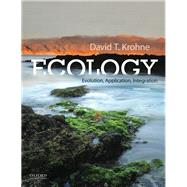With a groundbreaking approach, Ecology: Evolution, Application, Integration, Second Edition, teaches students to place ecological problems in an evolutionary context. The text also helps students develop scientific reasoning skills
by modeling the process of science that researchers use to address fundamental ecological questions.








